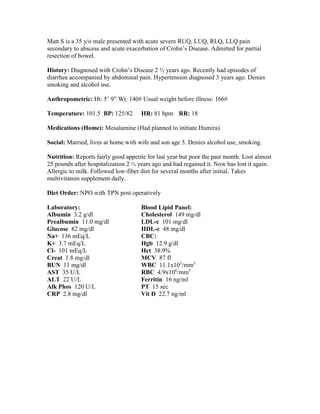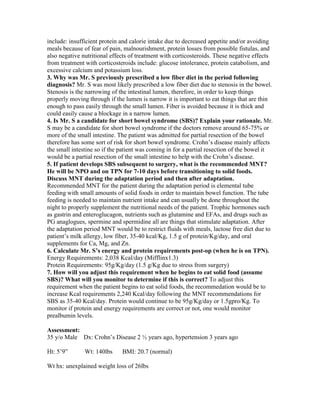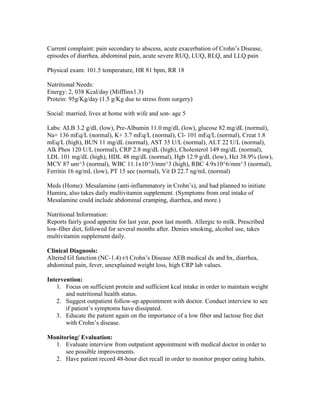Mr. S is a 35-year-old male admitted for partial bowel resection due to an abscess and exacerbation of Crohn's disease. His history and physical findings are consistent with Crohn's, including weight loss, diarrhea, abdominal pain, and fever. Nutritional consequences of Crohn's include protein and calorie deficits from poor appetite and malabsorption. He was previously prescribed a low-fiber diet to prevent bowel obstruction from stenosis. He is at risk for short bowel syndrome if a large portion of his small intestine is removed. Post-surgery, he will require enteral nutrition and monitoring of prealbumin levels to determine if nutritional needs are being met during adaptation.





